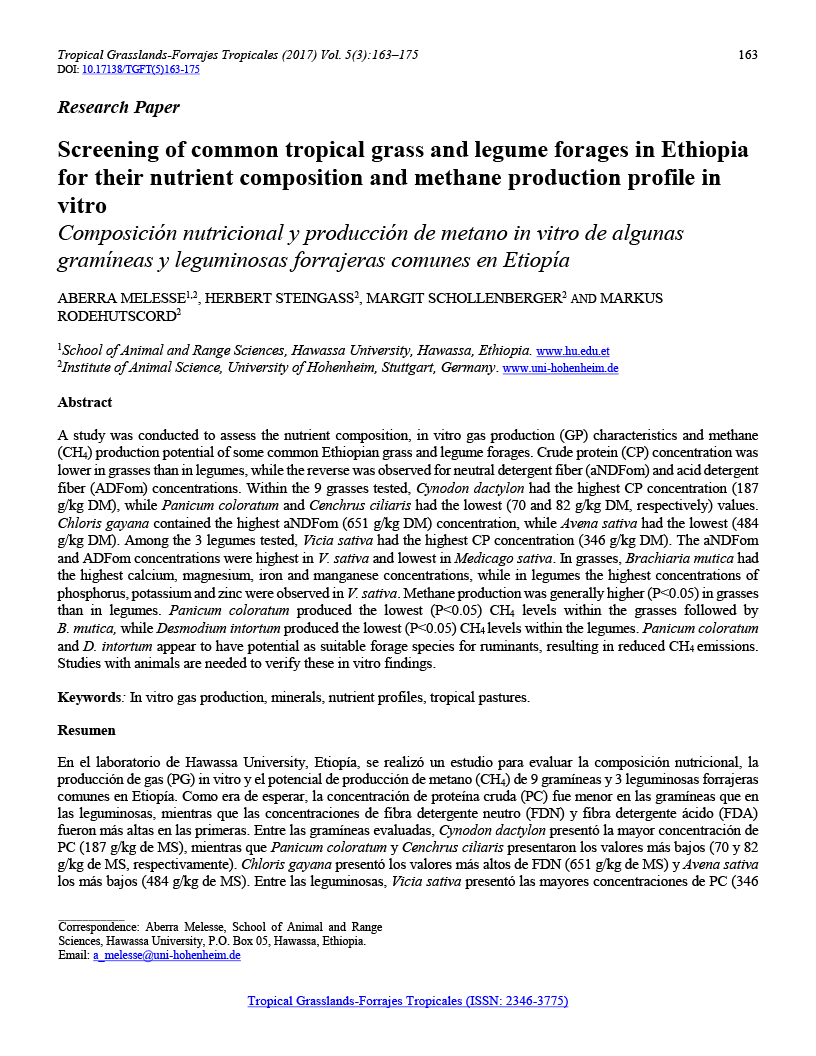Screening of common tropical grass and legume forages in Ethiopia for their nutrient composition and methane production profile in vitro
DOI:
https://doi.org/10.17138/tgft(5)163-175Abstract
A study was conducted to assess the nutrient composition, in vitro gas production (GP) characteristics and methane (CH4) production potential of some common Ethiopian grass and legume forages. Crude protein (CP) concentration was lower in grasses than in legumes, while the reverse was observed for neutral detergent fiber (aNDFom) and acid detergent fiber (ADFom) concentrations. Within the 9 grasses tested, Cynodon dactylon had the highest CP concentration (187 g/kg DM), while Panicum coloratum and Cenchrus ciliaris had the lowest (70 and 82 g/kg DM, respectively) values. Chloris gayana contained the highest aNDFom (651 g/kg DM) concentration, while Avena sativa had the lowest (484 g/kg DM). Among the 3 legumes tested, Vicia sativa had the highest CP concentration (346 g/kg DM). The aNDFom and ADFom concentrations were highest in V. sativa and lowest in Medicago sativa. In grasses, Brachiaria mutica had the highest calcium, magnesium, iron and manganese concentrations, while in legumes the highest concentrations of phosphorus, potassium and zinc were observed in V. sativa. Methane production was generally higher (P<0.05) in grasses than in legumes. Panicum coloratum produced the lowest (P<0.05) CH4 levels within the grasses followed by B. mutica, while Desmodium intortum produced the lowest (P<0.05) CH4 levels within the legumes. Panicum coloratum and D. intortum appear to have potential as suitable forage species for ruminants, resulting in reduced CH4 emissions. Studies with animals are needed to verify these in vitro findings.
Author Biographies
Aberra Melesse, School of Animal and Range Sciences, Hawassa University, Hawassa, Ethiopia. Institute of Animal Science, University of Hohenheim, Stuttgart, Germany.
School of Animal and Range Sciences,
Professor




